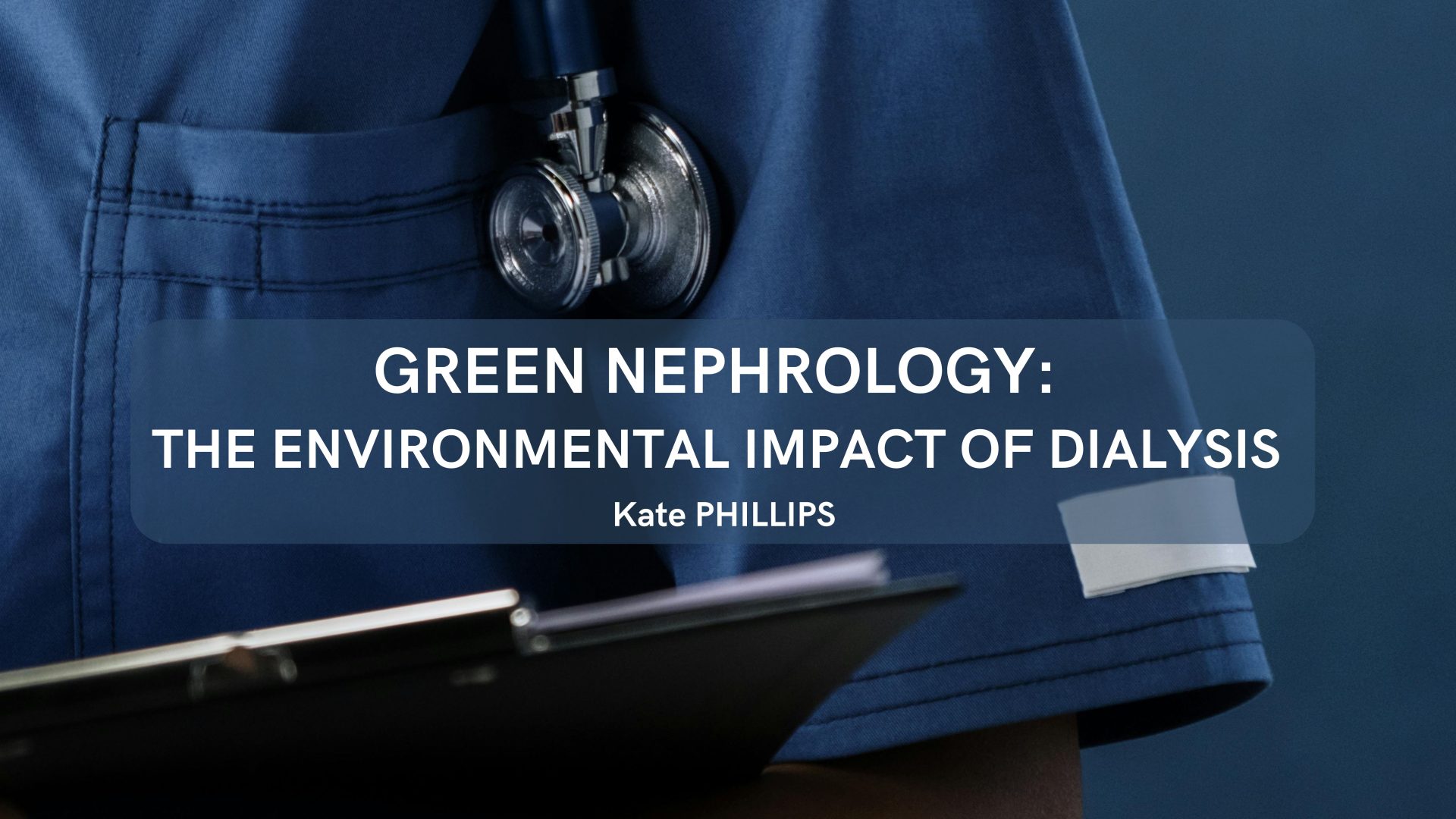Article de Kate Phillips (MS EEDD parcours RSEDD 2024-25)
Introduction
Chronic kidney disease (CKF) affects an estimated 830 million people globally¹, which is one in ten adults worldwide; and is expected to become the fifth biggest loss of years of life by 2040². As of 2019, over 2 million people worldwide die every year of renal failure through lack of treatment and close to 200 million take on catastrophic debt trying to access treatment³. CKF falls under Goal 3.4 of the UN’s 2030 agenda, which is to combat noncommunicable diseases (NCDs)⁴.
In the article, we will not tackle the causes and effects of CKD and other NCDs, but rather look at one of the primary treatments : dialysis, its environmental effects and the existing solutions.
What is dialysis ?
Dialysis is a vital medical procedure that takes over the blood-filtering function when kidneys fail to work properly. This treatment removes excess fluid and waste products from the blood that would otherwise build up to dangerous levels in the body.
There are two primary types of dialysis treatment available: haemodialysis and peritoneal dialysis. Haemodialysis, the more common approach used by almost 3 million people worldwide, involves filtering blood through an external machine typically three times per week for four-hour sessions, though home treatment schedules can vary. Peritoneal dialysis, alternatively, utilizes the body’s peritoneal cavity as a natural filter, requiring fluid exchanges approximately four times daily or overnight via a permanently placed catheter.
The duration of dialysis treatment depends on individual circumstances. While some patients may need only temporary dialysis until their kidneys recover, others require ongoing treatment until a kidney transplant becomes available. For those unsuitable for transplantation, dialysis may be a lifelong requirement.
Although dialysis can support a good quality of life – allowing patients to work, drive, exercise, and travel – it does present challenges. Side effects may include fatigue, muscle cramps, and itchy skin for haemodialysis patients, while peritoneal dialysis carries a risk of peritonitis. Life expectancy on dialysis varies significantly by age and overall health status, ranging from up to 20 years for younger patients to 2-3 years for those over 75. However, survival rates have improved over the past decade and continue to show positive trends.⁵
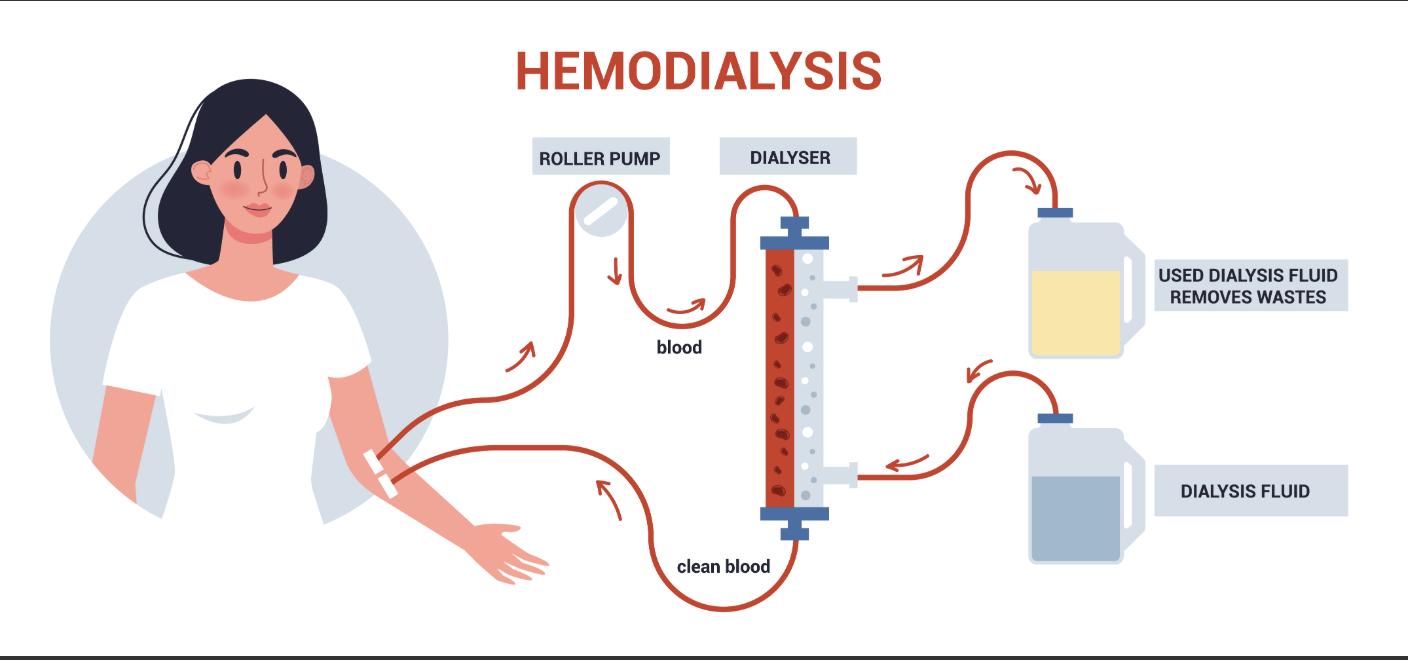
The development of dialysis represents one of the most significant advances in modern medicine, transforming a once-fatal condition into a manageable chronic disease. The foundations were laid in the early 20th century when Georg Haas performed the first human dialysis treatment in 1924.
However, the true breakthrough came in 1943 when Willem Kolff developed the first practical dialysis machine in Nazi-occupied Netherlands, using materials as basic as orange juice cans and sausage casings⁶. The treatment gained widespread clinical adoption in the 1960s, after Belding Scribner created the arteriovenous shunt, which allowed patients to undergo repeated treatments without exhausting their blood vessels.
The field advanced rapidly through subsequent decades, with innovations in membrane technology, water purification systems, and delivery methods. Home dialysis emerged as an option in the late 1960s, while continuous ambulatory peritoneal dialysis was introduced in the 1970s.
These developments, combined with improvements in supporting medications like erythropoietin and better understanding of dietary management, have significantly enhanced both the efficacy of treatment and patients’ quality of life. Today, dialysis supports millions of patients worldwide, though ongoing research continues to focus on making treatments more efficient, accessible, and better tolerated.
Environmental Impact Research and Analysis
Green nephrology is an emerging field that aims to make kidney care more environmentally sustainable while maintaining excellent patient outcomes. This discipline recognizes that current nephrology practices, particularly dialysis treatments, have a substantial environmental impact through high water and energy usage, medical waste generation, and carbon emissions.
By examining and improving every aspect of kidney care delivery – from facility operations to medical supplies to treatment methods – green nephrology seeks to reduce this environmental footprint while potentially reducing costs and improving efficiency. This approach encompasses both technological innovations and systemic changes to create more sustainable kidney care for the future.
A pioneer in this discipline, JWM Agar published his research in 2012⁷, when approximately 2 million people were undertaking dialysis globally. Extrapolating the data from this study, he estimated the following use of resources by the global population of dialysis users :
- 156 billion litres of used and discarded water
- 62 billion kWh of power
- 625,000 tonnes of plastic waste
In Japan, a life-cycle impact assessment was undertaken in 2021 to analyse the environmental impact of dialysis to show that the resource-intensive nature of kidney care makes it a strategic priority for healthcare organizations seeking to enhance their environmental performance and reduce operational costs. This research corresponds to what has been previously shown in other countries, such as the UK An analysis done by the NHS based on case studies from 2009-2012⁸ determined that by scaling the findings of 20 studies, there were potential savings of:
- £7 million in costs,
- 11,000 tonnes of CO2e, and
- 470 million litres of water.
Patients have been voicing their concerns since 2010, when speaking at the Green Nephrology Summit, kidney patient, Andy Williamson, said :
“I was increasingly shocked at how dependent I was as a kidney patient on finite resources. If you are on dialysis you are using really high quality plastics, often once and then they are getting burned or thrown away or whatever. And although I am now lucky enough to have had a transplant, one day I might have to have dialysis again, one day my daughter may have to have kidney replacement therapy and it is really clear to me that we are in a world where this capital of fossil fuel resources is just being used up without really thinking about it.⁹”
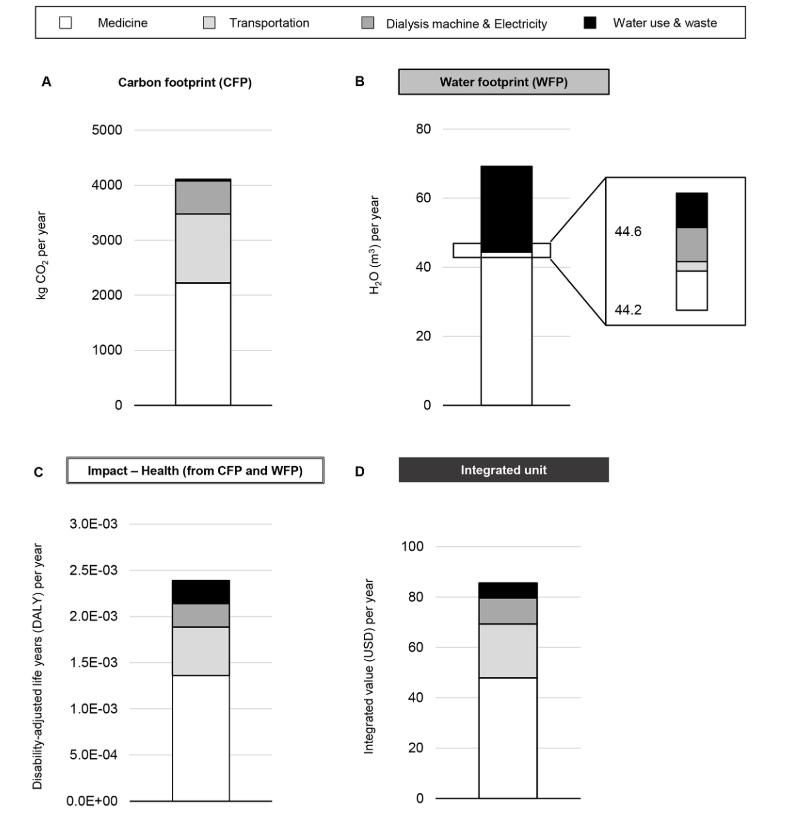
Figure 1. Results of the life cycle impact assessment for dialysis therapy.
A, B The carbon and water footprints for hemodialysis are calculated to estimate the integrated impact of hemodialysis on the Earth and humans based on the Inventory Database for Environmental Analysis (IDEA) and Embodied Energy and Emission Intensity Data for Japan Using Input-Output Tables (3EID). C, D This estimation adopts a model in which chronic hemodialysis treatment is given three times per week for one patient. Human health impact and integrated monetary value are calculated using the carbon and water footprints and are likely underestimated due to study limitations.
From: Environmental Impact of Care for End-stage Kidney Disease on the Earth and Humans
The waste generated by dialysis treatments falls into four main categories: packaging materials, clean disposables, contaminated disposables, and electronic equipment. The primary environmental concern stems from the dialyzers and tubing, which are made from polymers derived from fossil fuels. Since these components are designed for single use, they create substantial plastic waste that typically ends up in landfills or incinerators.
The waste problem extends beyond just the dialysis equipment itself. Additional waste comes from support materials like protective gear, food containers provided during treatment, and pharmaceutical packaging. Managing this waste is particularly challenging because many items are contaminated with biological or toxic substances. These hazardous materials often prevent recycling and may be explicitly forbidden from recycling streams by local and European regulations.
The disposal methods available for dialysis waste are problematic and costly. Landfills contaminate the environment, while incineration both pollutes and contributes to greenhouse gas emissions. Adding to these issues, dialysis machines themselves are designed with planned obsolescence, becoming electronic waste after several years of use.
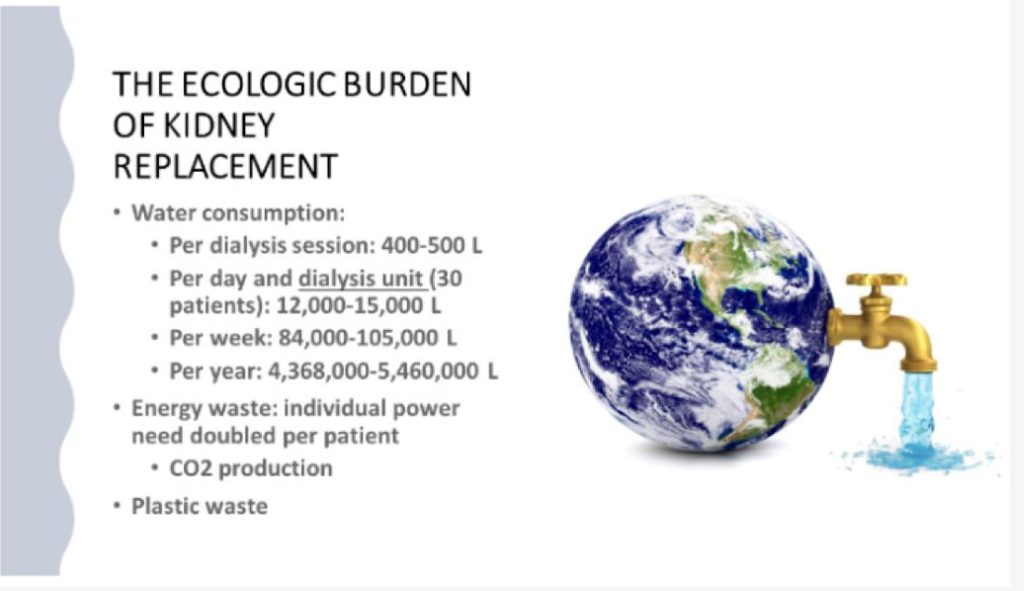
The strategic monitoring of resource consumption in dialysis services has proven to be transformative for environmental performance. A compelling case study emerged from NephroCare, Fresenius Medical Care’s European dialysis network, which implemented comprehensive resource tracking across its French facilities in 2005. This initiative encompassed three key metrics: electricity consumption, water usage, and care-related waste generation.
This systematic data collection enabled NephroCare to establish precise performance indicators and set targeted environmental objectives. The results were remarkable: between 2005 and 2018, the facilities achieved reductions of 29.6% in power consumption, 52.0% in water usage, and 38.9% in waste production¹⁰. These improvements are particularly significant given that the number of annual dialysis sessions more than doubled during this period.
In 2022, the European Kidney Health Alliance wrote a policy paper calling for a more sustainable and robust approach to nephrology care, and in particular the substantial environmental burden of dialysis which generates significant environmental impacts through considerable water consumption, greenhouse gas emissions, and plastic waste production¹¹.
In the UK, with the establishment of the Sustainable Development Unit within the NHS following the Climate Change Act 2008 created a clear mandate for achieving net-zero emissions by 2050, which catalyzed systematic environmental improvements across the healthcare sector.
Within this unit, there are 37 sustainable healthcare studies in the Green Nephrology Section, ranging from “Reuse of reject water from reverse osmosis for steam production¹²” which showed estimated savings of £15,000 a year, and and estimated 13,836 kg CO2e / year in one unit, to “Carbon Reduction at a Renal Unit through Sustainable Action Planning¹³” with actual savings of £57,528 and estimated 36.545 kg CO2e saved. By modelling the data provided by these initiatives, the UK centre for sustainable health hopes to reduce C02 emissions by 200-1000 tonnes¹⁴.
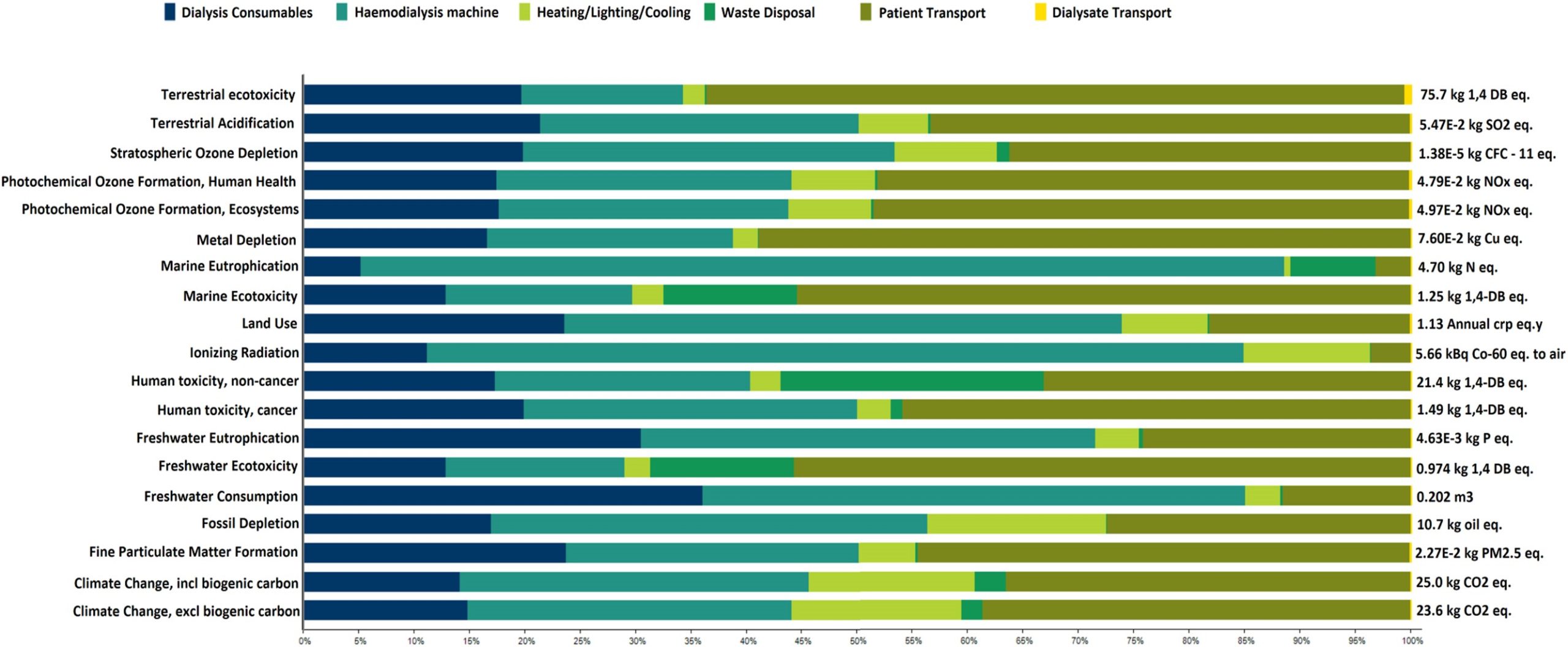
Figure 2: Nephrol Dial Transplant, Volume 38, Issue Supplement_1, June 2023, gfad063c_2695, https://doi.org/10.1093/ndt/gfad063c_2695
Future Directions and Solutions
Environmental optimization of dialysis therapy is crucial, given that it serves the majority of kidney failure patients. This optimization must span the entire process – from production and transport to therapeutic application and waste management. While some industrial stakeholders have implemented environmentally conscious measures, these efforts appear primarily concentrated on manufacturing rather than clinical applications.
Though improvements have been made in packaging, transport, and delivery processes, including some material recycling, industrial confidentiality often impedes transparent reporting of specific environmental initiatives. Additionally, comprehensive transnational assessments of dialysis’s ecological impact, both overall and at individual centers, remain incomplete.
There are several promising opportunities for environmental improvement. Reverse osmosis rejects water, which is typically discarded, could be repurposed for everyday uses such as toilet flushing, laundry, bathing, and even drinking. While this approach is ideal for new facilities, existing units can also implement it with proper advance planning.
Dialysate regeneration represents another avenue for reducing water consumption, with various compact dialysis systems either in use or under development. These systems not only offer environmental benefits through reduced water usage but also provide enhanced flexibility, user-friendliness, and potential cost savings for users and healthcare systems.
Addressing greenhouse gas emissions requires comprehensive solutions from both manufacturers and providers. Making dialysis energy-neutral could be achieved through various means, including transitioning to solar or wind energy, implementing heat pumps and exchangers, or utilizing dialysate regeneration. Simple operational changes, such as powering down equipment after hours, can further reduce energy consumption. Home dialysis presents additional environmental advantages by eliminating travel-related emissions and utilizing more efficient domestic temperature regulation compared to institutional settings.
The dialysis industry needs to transition toward a circular model incorporating biodegradable or recyclable materials and emphasizing reusability. Current dialysis machines, designed for limited lifespans, conflict with this cradle-to-cradle concept, although some parts of machines can be recycled such as bulbs, plastics and circuit boards¹⁵.
Dialysis waste encompasses packaging, contaminated and non-contaminated disposables, and hardware components. While solutions exist – from reducing material usage and careful component sorting to recycling both contaminated and non-contaminated items – regulatory frameworks often create barriers to proper disposal and recycling of bio-hazardous or toxic materials.
Peritoneal dialysis, particularly Continuous Ambulatory Peritoneal Dialysis (CAPD), might appear more environmentally sustainable due to lower water and energy requirements for the procedure itself. However, these benefits are partially offset by increased plastic usage in bags and packaging, resulting in greater waste generation. Furthermore, the production process for peritoneal dialysis supplies requires more water and energy for manufacturing and transportation compared to hemodialysis filter production.
Conclusion
The intersection of environmental sustainability and kidney health presents an urgent challenge for the medical community. Kidney replacement therapies, particularly dialysis, currently fall short in addressing climate change and environmental preservation concerns. This situation demands attention from both healthcare and broader societal perspectives, as the environmental implications of kidney care become increasingly apparent.
A comprehensive transformation is required across the entire kidney care ecosystem. This includes fundamental changes in how industries manufacture equipment, how hospitals deliver care, and how medical professionals and patients approach treatment options. As the primary stakeholders and consumers, healthcare professionals, patients, and insurance providers have a collective responsibility to drive manufacturers and service providers toward more sustainable practices.
To facilitate this transition, we need transparent environmental impact registries that track the ecological footprint of medical consumables, equipment, and pharmaceuticals. These registries should document water consumption, wastewater production, and other environmental metrics, enabling meaningful comparisons across countries, sectors, and products.
Additionally, the establishment of collaborative platforms—similar to initiatives in the United Kingdom—would allow healthcare professionals to share best practices and innovations in environmental nephrology. To maximize impact, international and national nephrology societies should coordinate their sustainability efforts, creating aligned strategies for environmental improvement in kidney care.
¹https://www.ucl.ac.uk/news/2023/jun/major-step-forward-reduces-mortality-kidney-failure-patients
²https://www.sciencedirect.com/science/article/pii/S0140673618316945
³https://www.theisn.org/wp-content/uploads/2024/02/Advocacy-4-pager_2019_Final-WEB-pagebypage.pdf
⁴https://www.who.int/news-room/fact-sheets/detail/noncommunicable-diseases
⁵https://www.nhs.uk/conditions/dialysis/
⁶https://kidneycareuk.org/kidney-disease-information/treatments/dialysis-80-years-of-the-artificial-kidney/
⁷Agar, John W. M. “Personal Viewpoint: Hemodialysis-Water, Power, and Waste Disposal: Rethinking Our Environmental Responsibilities.” Hemodialysis international 16.1 (2012)
⁸https://sustainablehealthcare.org.uk/activity/sustainable-kidney-care-project/
⁹https://www.kidney.org.uk/green-nephrology
¹⁰Bendine, Georges, et al. “Haemodialysis therapy and sustainable growth: a corporate experience in France.” Nephrology Dialysis Transplantation 35.12 (2020): 2154-2160.
¹¹https://academic.oup.com/ndt/article/38/5/1080/6575047?login=false
¹²https://map.sustainablehealthcare.org.uk/university-hospitals-bristol-nhs-foundation-trust/reuse-reject-water-reverse-osmosis-steam-productio
¹³https://map.sustainablehealthcare.org.uk/royal-cornwall-hospitals-nhs-trust/carbon-reduction-renal-unit-through-sustainable-action-planning
¹⁴https://sustainablehealthcare.org.uk/activity/sustainable-kidney-care-project/
¹⁵https://freseniusmedicalcare.com/en/sustainability/environment/
Bibliography
https://www.nature.com/articles/s41581-021-00425-3
https://www.agence-biomedecine.fr/Les-plans-ministeriels-2022-2026
https://www.agence-biomedecine.fr/Don-greffe-d-organes-et-de-tissus
https://academic.oup.com/ndt/article/38/Supplement_1/gfad063c_2695/7195337
https://doi.org/10.1093/ckj/sfae144
https://academic.oup.com/ckj/article/17/6/sfae144/7671144
https://academic.oup.com/ndt/article/38/5/1080/6575047?login=false
https://www.jmaj.jp/detail.php?id=10.31662/jmaj.2021-0105
https://www.dondorganes.fr/questions/33/depuis-quand-existent-les-greffes-dorganes-en-france
https://waring.library.musc.edu/exhibits/kidney/Transplantation.php
https://www.sciencedirect.com/science/article/pii/S2013251424001287
https://www.kireportscommunity.org/post/green-dialysis-the-environmental-conundrum-in-nephrology
https://www.theisn.org/wp-content/uploads/2024/02/Advocacy-4-pager_2019_Final-WEB-pagebypage.pdf
https://map.sustainablehealthcare.org.uk/category/programme/green-nephrology
https://sustainablehealthcare.org.uk/activity/sustainable-kidney-care-project/

